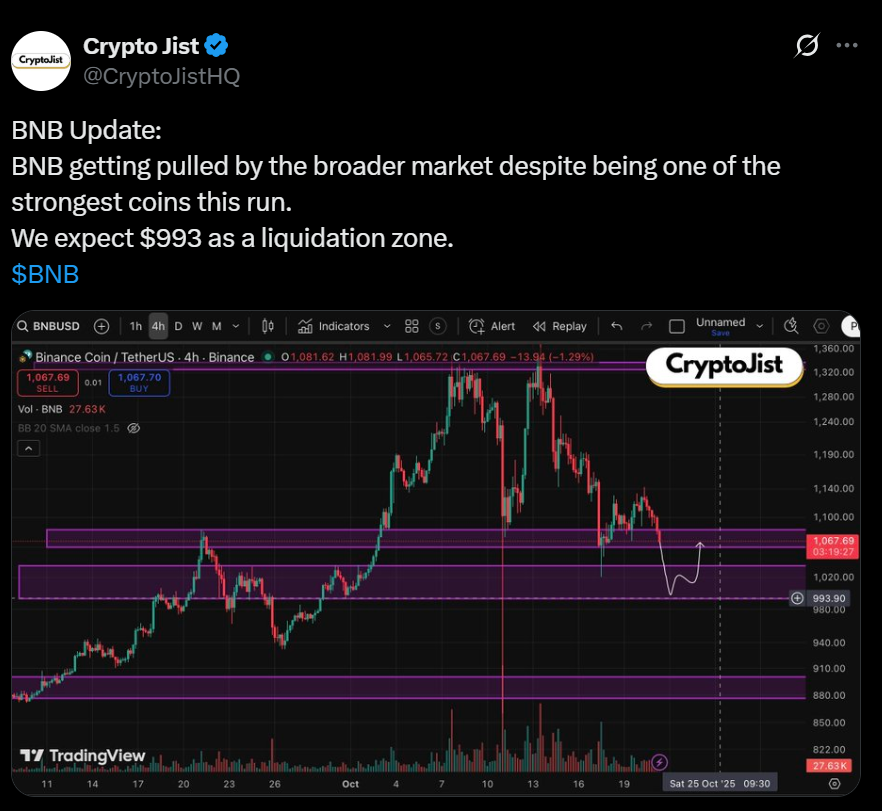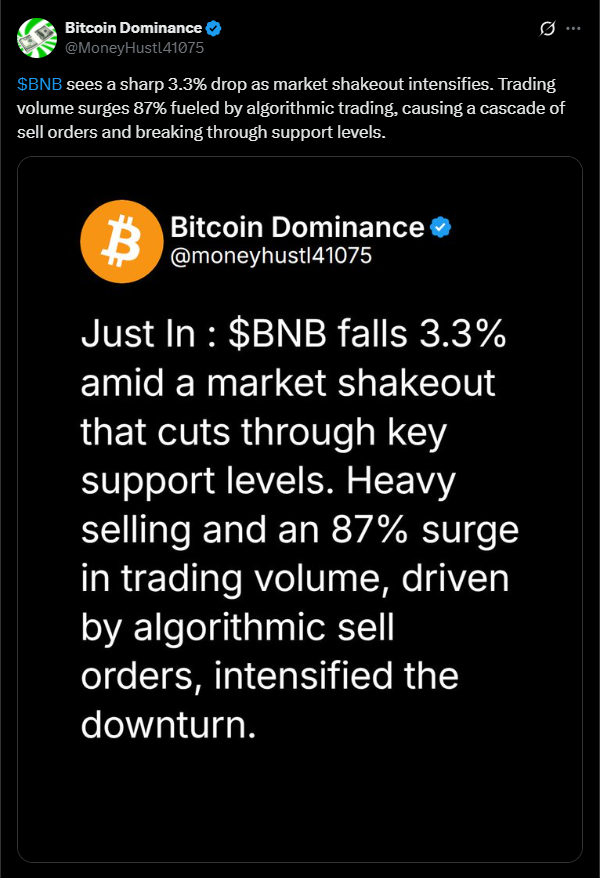- BNB fell 3.3% to lows near $1,063 before stabilizing around $1,080.
- Trading volume spiked 87%, triggering algorithmic sell cascades.
- Key support sits at $1,070 — a decisive break could invite deeper losses.
BNB, the native token of BNB Chain and Binance’s ecosystem, slipped 3.3% over the past 24 hours, dropping from $1,117 to a low of $1,063 before stabilizing just below $1,080. The decline came amid a broader crypto pullback, as Bitcoin’s drop toward $110,000 rippled across altcoins. According to CoinDesk data, BNB’s sell-off erased recent gains and sliced through a key technical floor, with trading volume surging 87% above its 24-hour average during the move.

Algorithmic Selling Deepens the Slide
The sell-off wasn’t purely organic. Analysts say the decline was amplified by algorithmic trading systems that triggered a cascade of automated sell orders once prices breached short-term supports. This liquidity flush quickly accelerated losses before demand caught up, with BNB finding tentative footing near $1,070. For now, that level serves as the key pivot point: a clean break below could invite deeper corrections, while a rebound above $1,085–$1,100 may stabilize short-term sentiment.
Weak Bounce, Hesitant Buyers
Attempts to stage a recovery were weak, stalling near $1,075 where fresh selling pressure re-emerged. Momentum indicators have cooled but haven’t flipped bullish, and traders remain cautious about re-entering without a clearer signal. Broader market sentiment also remains fragile — the CoinDesk 20 Index fell nearly 2.7%, signaling that the shakeout extends well beyond BNB. The move reflects a classic leverage flush across major crypto pairs following several weeks of buildup.

What Comes Next
Whether $1,070 holds will likely determine if this was a one-off washout or the beginning of a deeper correction. A sustained move below that threshold could target the $1,025–$1,040 range, while a recovery above $1,100 might set the stage for a technical rebound. For now, BNB’s path hinges on Bitcoin’s stability and whether algorithmic selling pressure eases as liquidity normalizes through the week.














